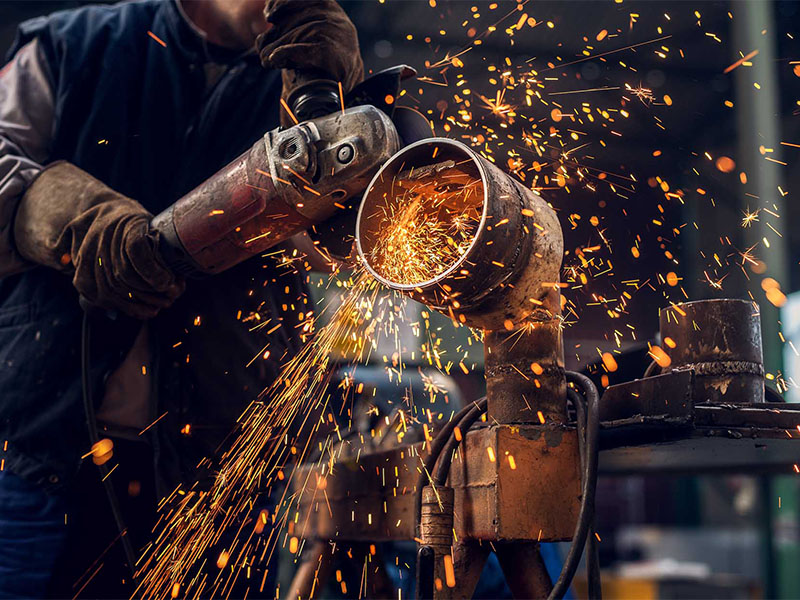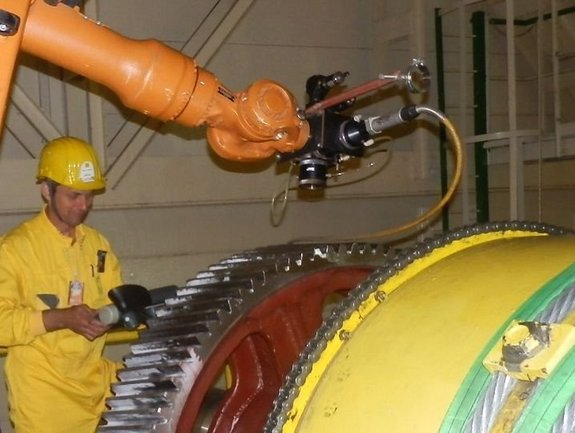Common Welding Repair Work Issues and Exactly How to Address Them Effectively
Welding repair work commonly encounter a series of concerns that can endanger the integrity of the end product. Usual troubles consist of insufficient penetration, porosity, and imbalance, to name a few. Each issue provides distinct difficulties that require certain techniques for resolution. Recognizing these issues is necessary for welders intending to improve their outcomes and skills. This conversation will certainly check out these common welding fixing concerns and efficient techniques to resolve them.
Insufficient Penetration
Inadequate penetration happens when the weld steel stops working to fully fuse with the base product, causing weak joints and possible architectural failings. This concern usually originates from insufficient heat input, wrong electrode angle, or incorrect welding speed. Welders may encounter inadequate infiltration due to a miscalculation of the essential parameters for a details product density or kind. Additionally, contamination on the base product's surface area can prevent efficient bonding, intensifying the problem. To resolve poor infiltration, welders ought to assure suitable setups on their devices and preserve a tidy work surface. Regular assessment of welds is recommended to recognize any type of deficiencies early, enabling prompt improvements and the prevention of compromised structural stability in bonded assemblies.
Porosity
Porosity is a common problem in welded joints that manifests as small gas bubbles entraped within the weld metal. This flaw can endanger the stability of the weld, bring about reduced stamina and prospective failing under stress. Belgrade. Porosity commonly occurs from contamination, dampness, or inappropriate welding methods, which enable gases to run away right into the liquified weld swimming pool. To resolve porosity, welders must ensure appropriate surface area preparation, preserve a clean workplace, and utilize suitable welding parameters. In addition, selecting the best filler material and protecting gas can reduce gas entrapment. Regular inspection and screening of welds can assist identify porosity early, guaranteeing prompt restorative actions are taken, thus preserving the top quality and integrity of the welded framework
Imbalance
Imbalance in welding can develop from numerous factors, including improper setup and thermal development. Comprehending the source is vital for reliable resolution. Numerous adjustment techniques are readily available to realign parts and assure structural integrity.
Reasons for Imbalance
Welding misalignment usually stems from a variety of underlying issues that can endanger structural integrity. One key cause is inappropriate fit-up of elements before welding, which can cause spaces and unequal surfaces. Variants in thermal growth throughout the welding process can likewise cause distortion, especially if the products being signed up with have various coefficients of growth. In addition, inadequate securing and fixturing may fall short to hold elements firmly in position, leading to activity during welding. Inadequately maintained equipment, consisting of welding equipments and devices, may present disparities in the weld bead, further adding to imbalance. Driver mistake, stemming from insufficient training or experience, can additionally play a considerable function in creating misaligned welds.

Correction Methods Available
Dealing with misalignment effectively calls for a mix of restorative techniques customized to the specific problems available. One typical technique is using fixtures or jigs to hold components in the proper setting during welding, guaranteeing regular positioning. In addition, pre-heating the materials can help lower distortion and improve fit-up. For significant imbalance, mechanical adjustment strategies, such as utilizing hydraulic jacks or clamps, can be employed to fix the position before welding. Post-weld warmth therapy may also be needed to soothe stresses brought on by misalignment. Lastly, mindful evaluation and adjustment during the arrangement phase can prevent misalignment issues from becoming substantial troubles, advertising a smoother welding procedure and enhancing total structural stability.
Distortion
Distortion is a common obstacle in welding that can occur from various variables, including uneven cooling and heating. Recognizing the sources of distortion is necessary for executing efficient prevention strategies. Addressing this problem not only improves architectural integrity but also improves the total high quality of the weld.
Reasons of Distortion
When based on the extreme warm of welding, materials commonly undergo modifications that can lead to distortion. This sensation mainly emerges from thermal growth and contraction during the welding procedure. As the weld location warms up, the material increases; upon cooling, it gets, which can produce inner stress and anxieties. On top of that, irregular heating across a work surface can worsen these tensions, leading to bending or flexing. The type of product also plays a substantial role; steels with varying thermal conductivity and coefficients of growth may react in a different way, leading to uncertain distortions. Furthermore, inadequate joint style and insufficient fixturing can add to misalignment throughout welding, raising the possibility of distortion. Comprehending these causes is crucial for efficient welding repair and prevention methods.
Avoidance Techniques
Effective prevention strategies for distortion during welding emphasis on managing warmth input and guaranteeing appropriate joint style. Preserving a regular heat input assists to decrease thermal development and contraction, which can cause distortion. Utilizing methods such as pre-heating the workpiece can likewise reduce the temperature level slope, advertising consistent home heating. Furthermore, picking ideal her latest blog joint styles, such as T-joints or lap joints, can enhance security and lower stress and anxiety focus. Implementing proper fixturing to safeguard the work surfaces in location additionally help in maintaining alignment during the welding process. Staggered welding series can disperse heat much more evenly, stopping localized distortion. By using these methods, welders can greatly reduce the chance of distortion and enhance the total top quality of their welds.
Fracturing
Fracturing is an usual problem experienced in welding repair work, typically arising from various aspects such as inappropriate cooling rates, material choice, or insufficient joint preparation. The incident of fractures can greatly endanger the honesty of the weld, causing prospective failings during operation. To address this problem, welders have to first assess the origin causes, making certain that products are suitable and appropriately picked for the details application. In addition, managing the cooling price throughout the welding process is vital; quick air conditioning can induce anxiety and cause splitting. Correct joint design and preparation also add to minimizing the risk. Applying these methods can enhance weld top quality and toughness, ultimately reducing the chance of breaking in finished weldments.

Incomplete Fusion
A significant problem in welding repair services is incomplete blend, which happens when the weld metal does not properly bond with the base product or previous weld passes - Montana Mobile Welding and Repair Belgrade Fabrication. This issue can cause weaknesses in the joint, potentially compromising the honesty of the bonded structure. Aspects adding to insufficient blend include insufficient warm input, incorrect welding strategy, and contamination of the surfaces being signed up with. To address this problem properly, welders need to assure appropriate pre-weld cleansing and surface preparation, along with change their welding criteria to attain adequate infiltration and combination. Regular evaluation during the welding process can also assist identify incomplete combination early, allowing for timely restorative procedures to enhance the general quality of the weld
Overheating
While welding repair services can boost structural integrity, overheating provides a substantial difficulty that can cause product destruction. Extreme heat during welding can modify the mechanical buildings of metals, leading to decreased stamina, enhanced brittleness, article and warping. This sensation is especially important in high-stress applications where architectural dependability is paramount. Identifying getting too hot can include visual assessments for discoloration or distortion, along with monitoring temperature level during the welding procedure. To alleviate the dangers connected with overheating, welders must employ appropriate methods, such as managing warmth input, readjusting traveling speed, and utilizing appropriate filler products. Furthermore, implementing pre- and post-weld warm therapies can assist bring back product homes and enhance the overall quality of the repair work, making certain long-term efficiency and safety and security.
Often Asked Inquiries
What Are the Usual Signs of a Welding Issue?

Just How Can I Check My Welds for High quality?
To test welds for quality, one can make use of visual inspections, ultrasonic testing, and radiographic methods. Each method ensures structural honesty, determines issues, and validates adherence to specified requirements, inevitably boosting the dependability of the welded joints.
What Safety and security Preventative Measures Should I Take While Welding?
When welding, one should prioritize safety and security by wearing suitable individual protective equipment, guaranteeing proper ventilation, securing combustible materials away, preserving a tidy workspace, and understanding surroundings to protect against mishaps and injuries.
Can I Repair a Weld Without Redesigning the Entire Joint?
Fixing a weld without redesigning the entire joint is possible, depending on the damage (Montana Mobile Welding and Repair). Methods such as grinding, including filler product, or utilizing a welding procedure can properly deal with details problems while protecting the bordering structure
What Tools Are Necessary for Effective Welding Repair Works?
Essential devices for effective welding repair services include a welding device, cord brush, grinder, safety equipment, clamps, and filler products. Each tool plays a vital role in ensuring quality and security during the fixing procedure. Porosity usually occurs from contamination, moisture, or improper welding methods, which enable gases to escape right into the molten weld pool. Improperly maintained equipment, including welding devices and tools, might introduce disparities in the weld grain, further contributing to misalignment. my company When subjected to the extreme warm of welding, materials frequently undertake adjustments that can lead to distortion. Cracking is an usual problem come across in welding repair work, often resulting from various variables such as inappropriate cooling prices, product selection, or insufficient joint preparation. A substantial concern in welding repair services is incomplete combination, which takes place when the weld metal does not effectively bond with the base product or previous weld passes.